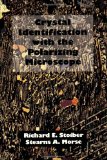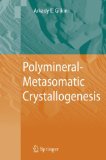Crystallography
- Aachen RWTH - Institut für Kristallographie
- American Crystallographic Association
- American Mineralogist Crystal Structure Database
- Associazione Italiana Cristallografia
- Atlas der Krystallformen von Victor Goldschmidt (1923)
- British Crystallographic Association
- Cambridge Crystallographic Data Centre
- Cristalografía
- Crystal Growing Guide
- Crystal Structures
- Crystallographic CourseWare
- Crystallography
- Crystallography 101
- Cristallographic lesson for amateurs
- Crystallographic Information and Sources
- Crystallographic Topology
- Crystallography and Mineral Crystal Systems
- Deutsche Gesellschaft für Kristallographie
- European Crystallographic Association
- Information Server for Crystallography.
- Kristalle
- Mineral Spectroscopy Server
- Muzej u Majdanpeku (Serbia) - collection of crystals
- Polymorf - Knowhere - Discover how the structure of space determines the shape of things
- SCA - Society of Crystallographers in Australia
- Shape and Forms
- SMCr - Sociedad Mexicana de Cristalografía
- The Crystal Archive of Eyes of Time
- US National Committee for Crystallography
- Virtual crystallography page
- World Database of Crystallographers
- WWW-MINCRYST
- Birkbeck College - The Department of Crystallography
- Karlsruhe Universität - Institut für Kristallographie
- Köln Universität - Institut für Kristallographie
- Ludwig-Maximilians - Universität München - Institut für Kristallographie
- Pavia University - CNR Centro di Studio per la Cristallochimica e la Cristallografia
Books about crystals
| Crystal Structure Determination This textbook provides a concise introduction to modern crystal structure determination, emphasizing both the crystallographic background and the successive practical steps. In the theoretical sections, more importance is attached to a good understanding, assisted by many figures, than to a rigorous mathematical treatment. The most important measuring techniques, including the use of modern area detectors, and the methods of data reduction, structure solution and refinement are discussed from a practical point of view. A special emphasis is put on the ability to recognize and avoid possible errors and traps, and to judge the quality of results. |
|
| Crystals & Crystal Growing Experiments and problems to be done by the non-specialist to aid in his understanding of crystals. |
|
| Crystal Identification With The Polarizing Microscope This text describes the theory and practice of optical mineralogy in terms useful to all practitioners from the beginning student to the professional in field and laboratory geology and industrial and environmental mineralogy. The author's aim is to provide the simplest possible access to the most powerful techniques of optical crystal identification. The book emphasizes useful practical theoretical material and methods for studying both thin sections of rocks and immersion of mineral grains in refractive index liquids. It contains original research results found in no other text. A major goal of the text is to allow precise determination of refractive index and the essential composition of crystals belonging to important mineral groups such as olivine, feldspar, and pyroxene. New methods for achieving this are developed for both white light and colored light of variable wavelength. Among the book's unique features is the color fringe chart developed by Prof. Morse for estimating both the direction and degree of mismatch between the refraction index of a crystal and that of the surrounding liquid medium in the immersion method. Further, a new algebraic treatment of the dispersion method allows a high precision of match between crystal and liquid. An original classification of interference figures aids crystal identification. Worked examples of refractive index determination and crystal identification are given for each optical class of crystals. The optic orientation of optically biaxial crystals is illustrated with examples from each crystal system portrayed in stereographic projection. Principles and applications of crystal identification with the dispersion method are developed in a separate chapter. The final chapter is a practical, step-by-step guide to crystal identification in thin section or immersion. An identification table for the most common asbestos minerals, including the dispersion staining method used by most environmental laboratories. |
|
| Polymineral-Metasomatic Crystallogenesis Polymineral-Metasomatic Crystallogenesis is dedicated to the foundations of polymineral crystallogenesis in solutions typically occurring in nature. Effects, laws, and mechanisms of a metasomatic crystal replacement, joint crystal growth of different phases, mixed crystal formation, and aggregate re-crystallization as well as oriented overgrowth (epitaxy and quasi-epitaxy) and crystal habit origin are considered experimentally. The behaviour of these processes in nature are discussed in addition to pseudomorphs, poikilitic crystals (and other replacement forms), features of rapakivi structure, fluorite morphology, and many more. The concept is a generalization of the classic theory on crystallogenesis which is complicated by phase interaction in polymineral systems. Polymineral-Metasomatic Crystallogenesis is designed for chemists, geologists, physicists, and postgraduates and advanced undergraduate students of these fields. |



